
MOUNT SINAI: July 4, 2007
Archbishop Damian of Sinai Greets Bishop Peter of Cleveland and the Young Pilgrims of the Russian Church Abroad
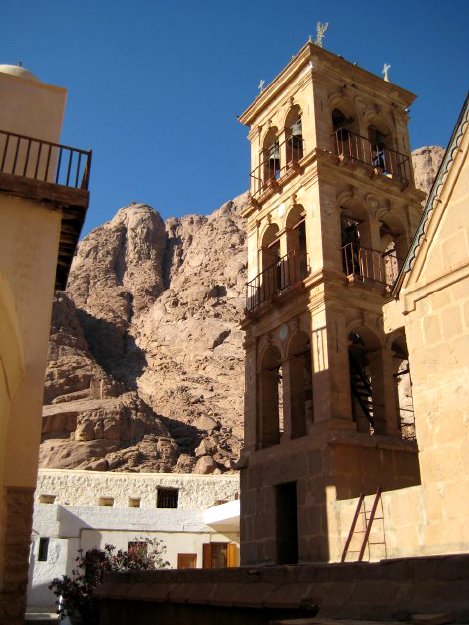 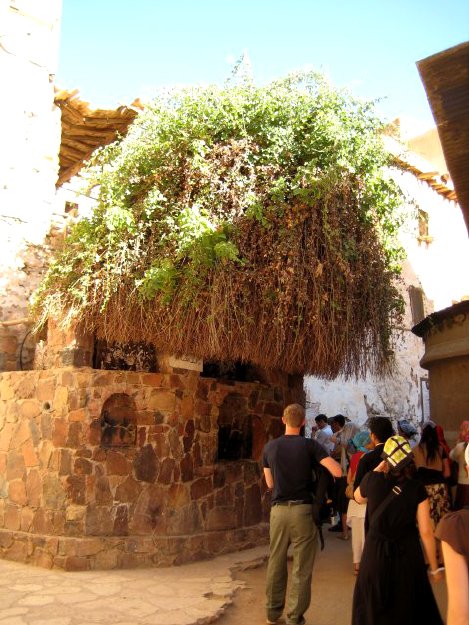 On Wednesday, July 4, the young participants of the pilgrimage of the Russian Church Abroad prayed during Divine Liturgy and partook of the Holy Gifts of Christ in the monastery of Mount Sinai, which has existed from the first centuries of Christianity. Since the 9th century, it is known throughout the world as the Monastery of St Catherine, since the venerable relics of the holy martyr are kept there. In the West, St Catherine is considered the heavenly protectress of students. The pilgrims venerated her relics here and also the roots of the Burning Bush, from which God spoke to Moses. On Wednesday, July 4, the young participants of the pilgrimage of the Russian Church Abroad prayed during Divine Liturgy and partook of the Holy Gifts of Christ in the monastery of Mount Sinai, which has existed from the first centuries of Christianity. Since the 9th century, it is known throughout the world as the Monastery of St Catherine, since the venerable relics of the holy martyr are kept there. In the West, St Catherine is considered the heavenly protectress of students. The pilgrims venerated her relics here and also the roots of the Burning Bush, from which God spoke to Moses.
The Sinai Peninsula joins Africa and Asia and is divides the Mediterranean and Red Seas. The south end of the peninsula, which is located between two arms of the Red Sea, is mountainous. The most well-known is Mount Sinai, which is Holy Scripture is called Horeb, surrounded by the land known as Madia, or Midian, because this is where the descendants of Abraham, the Midianites, lived. Fleeing from the wrath of the Pharaoh, Moses came here from Egypt, and for many years ministered to the flock with the Midianits priest Jethro. In the stillness of the Sinai desert, he purified his soul and prepared for his prophetic works. God appeared to him here in the form of the Burning Bush and sent him to Egypt to deliver the Hebrews from slavery.
Upon fleeing Egypt, the Israelites crossed the Red Sea and stopped on the Sinai Peninsula, where Moses received the Ten Commandments, inscribed on tablets of stone. Six centuries later, another great Israelite prophet, Elias, came to this place as he fled from Queen Jezebel, and it was here that the Lord appeared to him in the form of a gentle breeze. 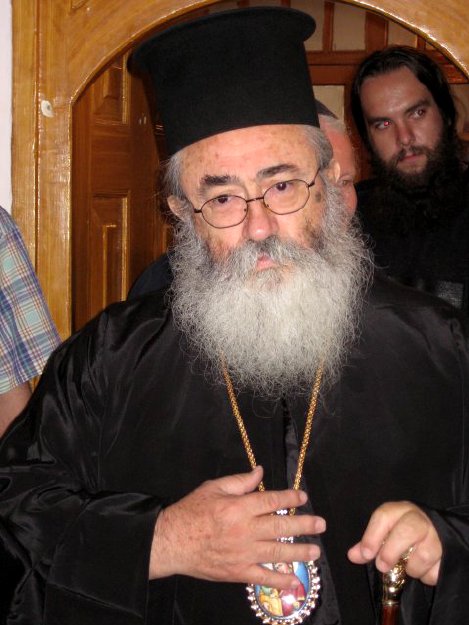 This desert, blessed by the presence of God, was visited by ancient Christians, where they came to abandon the cities and avoid persecution, finding solitude and prayer, and salvation. Among the Sinai monastics were St Niel of Sinai, St John of the Ladder and others. This desert, blessed by the presence of God, was visited by ancient Christians, where they came to abandon the cities and avoid persecution, finding solitude and prayer, and salvation. Among the Sinai monastics were St Niel of Sinai, St John of the Ladder and others.
All the rulers of the Sinai Peninsula, from Arab caliphs, Turkish sultans and even Napoleon protected those who led their spiritual labors here, and the monastery was protected from destruction.
The monastery's abbot, and the head of the Autonomous Church of Sinai of the Jerusalem Patriarchate, His Eminence Archbishop Damian, lovingly welcomed the pilgrims, led by His Grace Bishop Peter. The youth choir, directed by Michael Gil, gave a concert at the reception hall of Archbishop Damian, and Deacon Eugene Kallaur intoned Many Years to His Eminence.
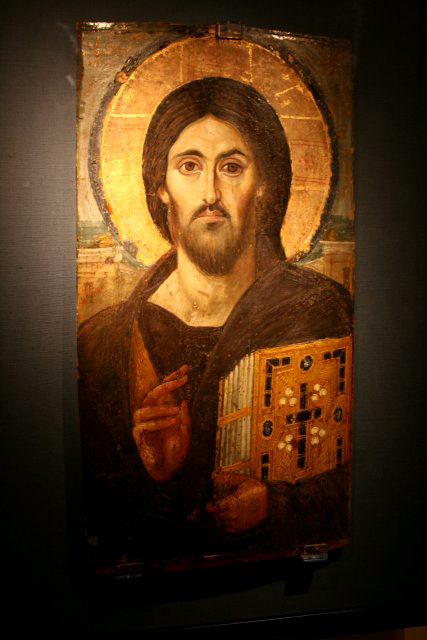 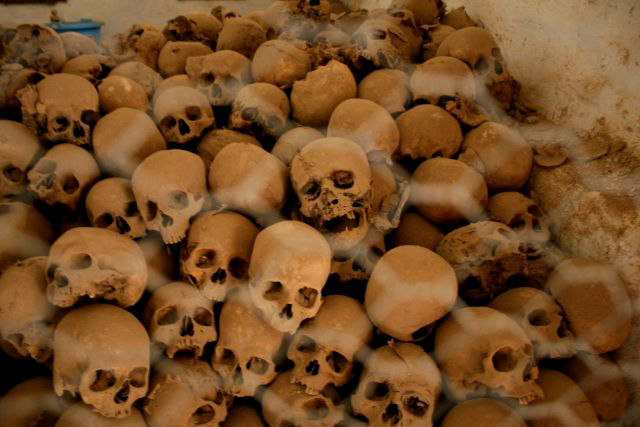 After meeting His Eminence, the pilgrims headed for the monastery museum, then to the ossiary (crypt), where the bones of the monks have been kept for centuries. Ancient tradition holds that the dead are first buried in the small cemetery, and then their bones are placed into the ossiary, skull with other skulls, the bones with the other bones. The remains of archbishops are kept in special niches. This is an ancient burial tradition of the Eastern monasteries, and developed because most of the monasteries are located in the mountains, where digging graves is difficult. Also, this tradition has a spiritual meaning for those living in the monasteries: it is a reminder of the fleeting nature of life on earth, and of the temporality of physical beauty and strength. After meeting His Eminence, the pilgrims headed for the monastery museum, then to the ossiary (crypt), where the bones of the monks have been kept for centuries. Ancient tradition holds that the dead are first buried in the small cemetery, and then their bones are placed into the ossiary, skull with other skulls, the bones with the other bones. The remains of archbishops are kept in special niches. This is an ancient burial tradition of the Eastern monasteries, and developed because most of the monasteries are located in the mountains, where digging graves is difficult. Also, this tradition has a spiritual meaning for those living in the monasteries: it is a reminder of the fleeting nature of life on earth, and of the temporality of physical beauty and strength.
Here the pilgrims venerated the relics of St Stephen, who lived in the sixth century, which are dressed in black monastic garb. St John writes of them in his work "The Ladder:" "Here lived Stephen, who loved silent desert life and spent many years in monastic struggles and shone with many good works, especially with fasting and tears."
The pilgrims thus concluded their visit to the monastery, and they headed for a hotel for a brief respite, since that night they were to ascend Mount Sinai itself.
Upon ascending the holy mountain, the pilgrims performed a moleben headed by Bishop Peter in the chapel of the Holy Trinity.

|